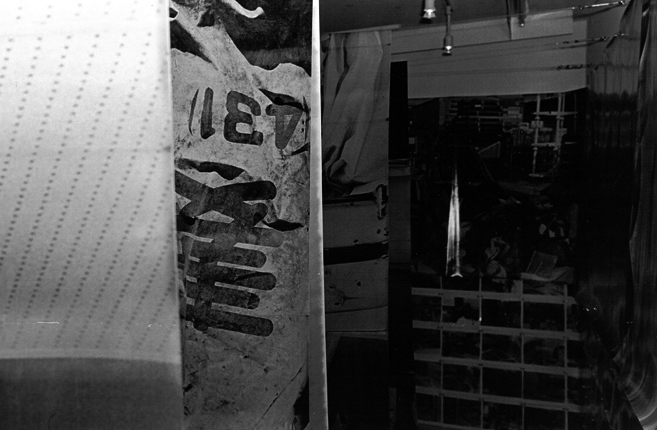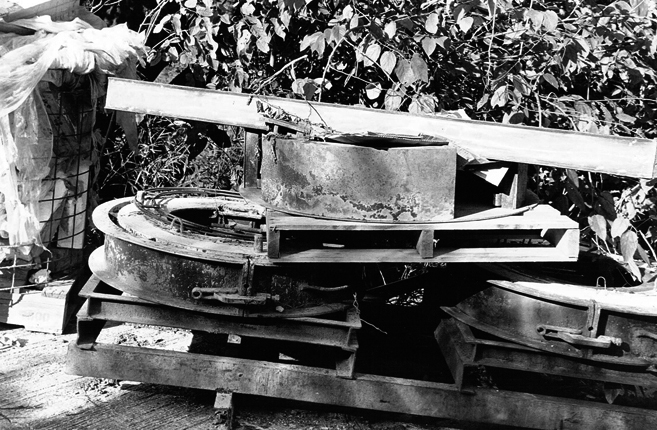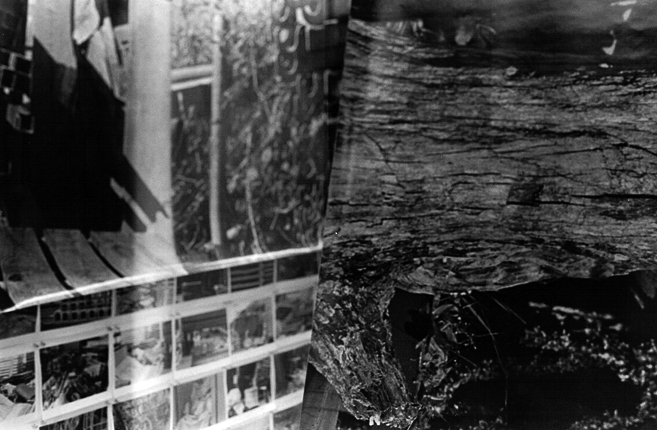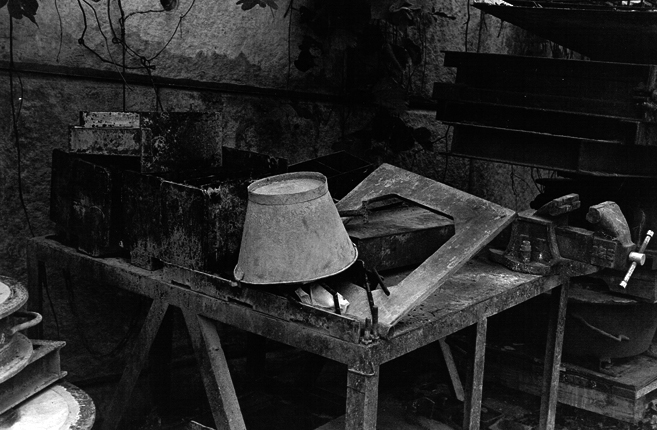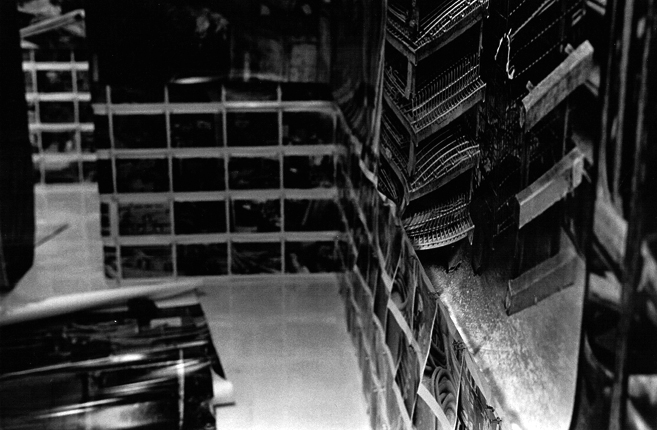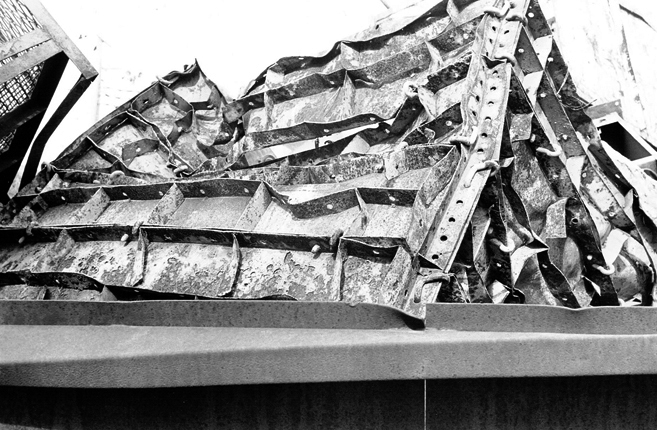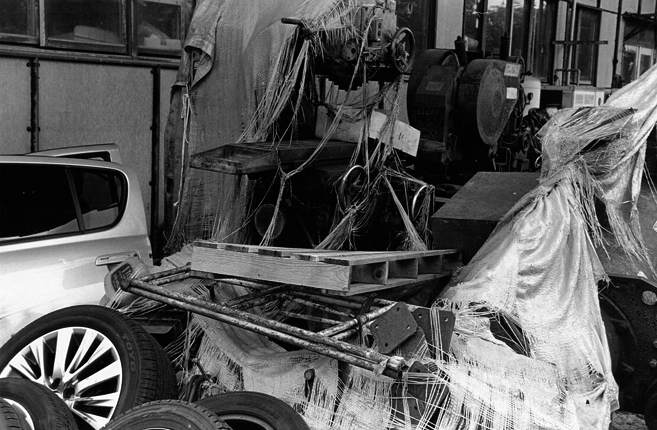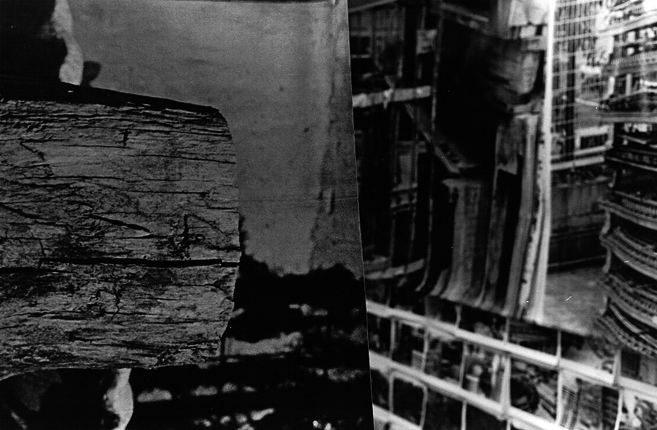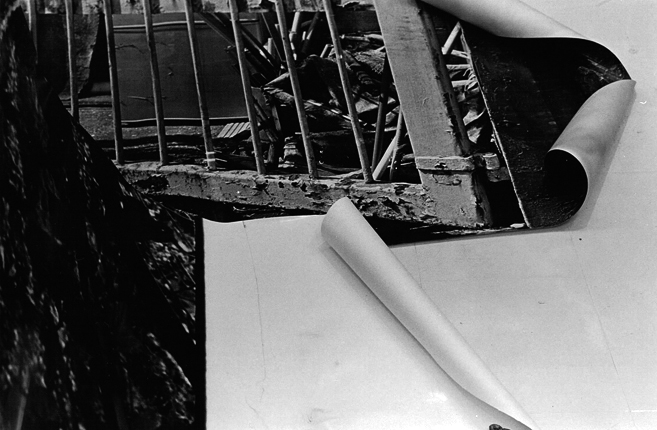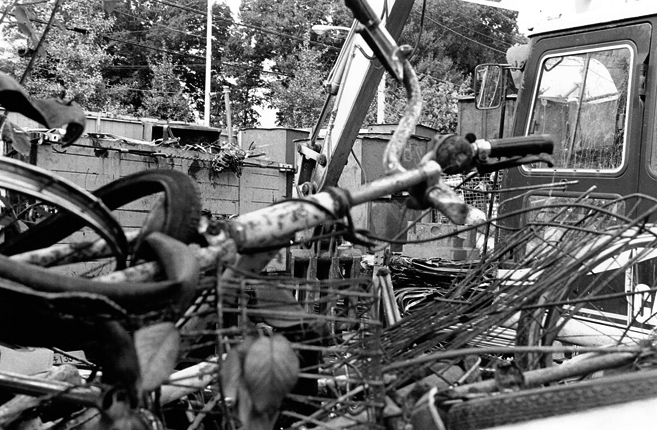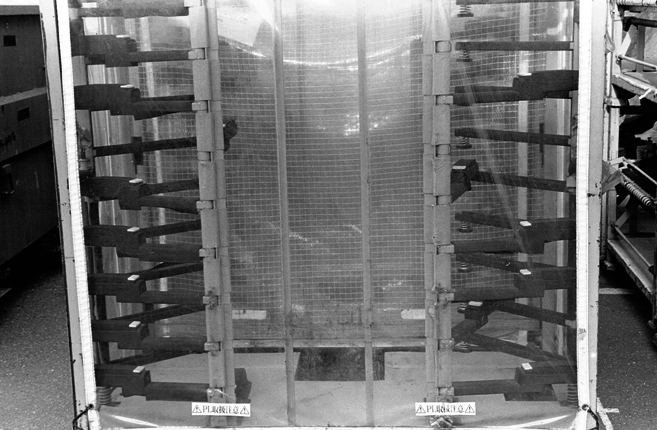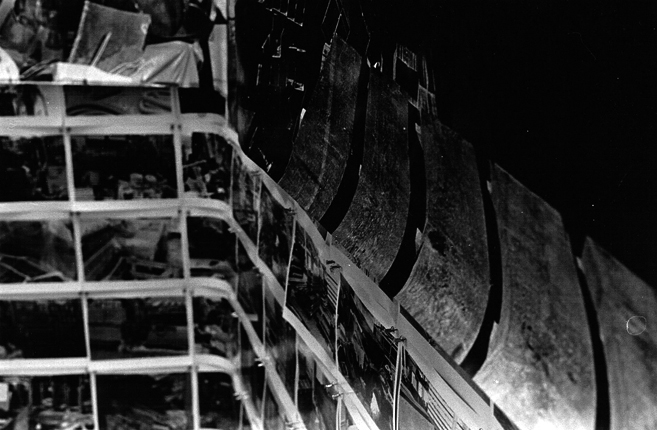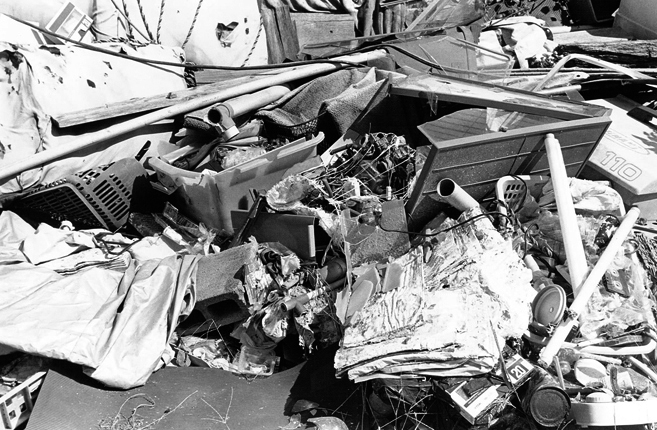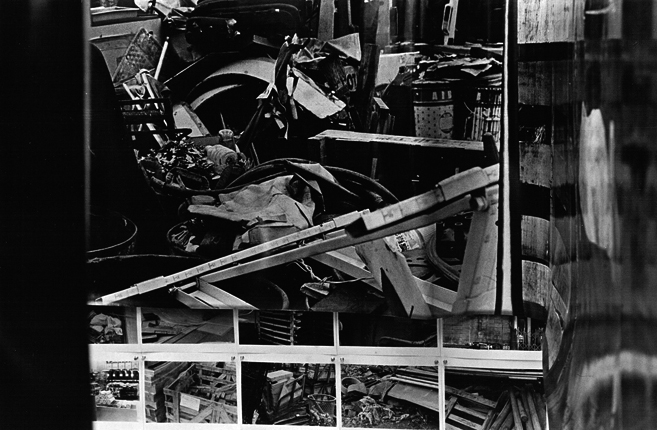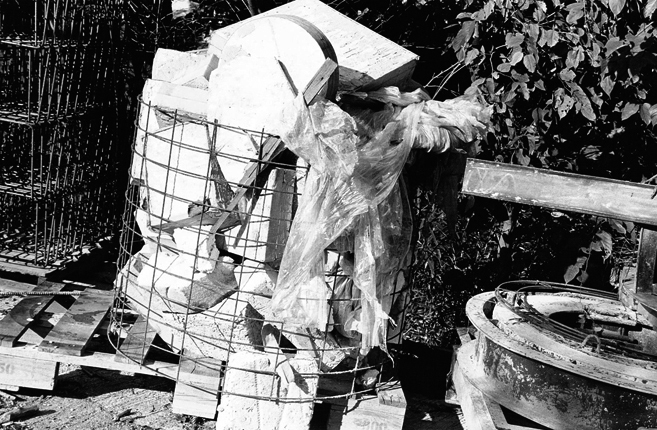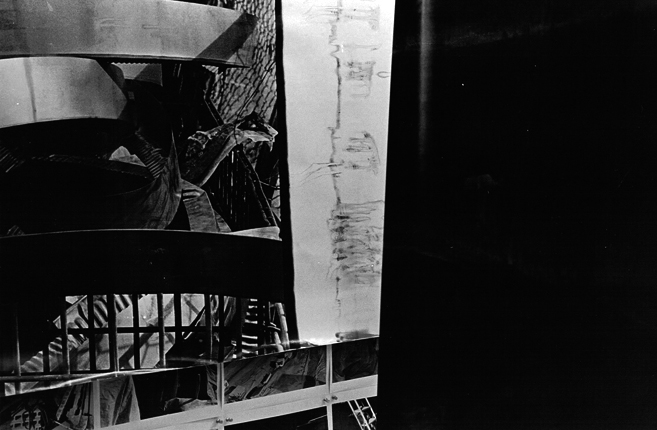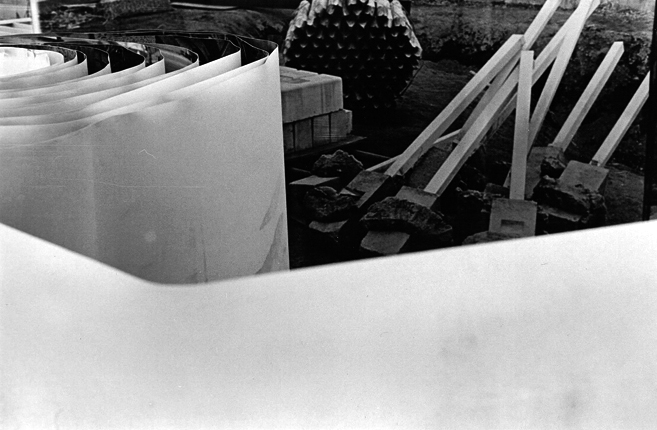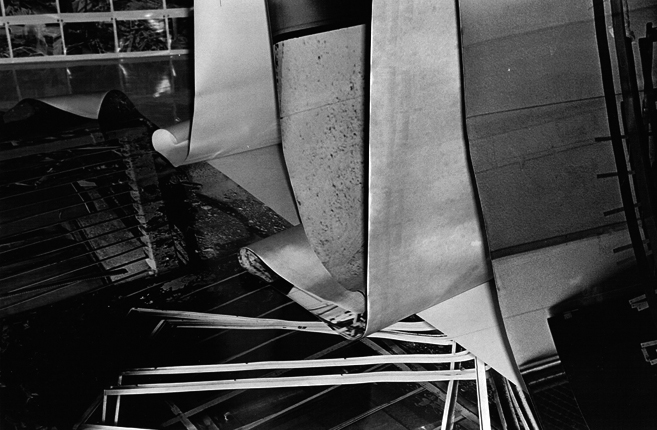The photos have been taken around industrial areas and construction sites, in the suburbs of Tokyo. The subjects of the shots are both construction materials, which haven’t been used yet, and scrap materials, ready to be dismantled. In both cases, they are detached from the structure they’re supposed to be part of, so that their true essence lays bare. There’s a great variety of elements, such as concrete, iron, timber, leather, stone, rubber, plastic, fabric, sand and lead, in all different shapes and states. Just by looking at the photographs, it is not always clear if the materials have been shot in the process of creation or destruction. In fact, the intention is to present a situation where creation and destruction coexist.
All the materials are detached from their original purpose, and I find different facets of the same object just by changing a little bit the position and the angle of the camera. I shoot many pictures in the same place, while gradually moving away from the subject. Despite this, when I exhibit my work, I intentionally avoid displaying them in the order I shot them in. This is because I do not see time as a chronological line of past, present and future.
In every exhibition, I believe that the movement of the visitors themselves, as they look through the pictures, one by one, right from the entrance, can itself be defined a “time line”. When I display my shots, I cram the walls and the floor with one or two thousand 8×10 prints, with no blank space left, hindering what can be called the “linear flow of time” of the visitor’s eye. In this way, even though the visitor is free to choose the order in which they look at the pictures, they are obliged to look upwards and downwards, so it is difficult to stick to the “linear conception” of time. Moreover, here and there in the exhibition, the visitor encounters photos of the same subject, taken in the same place, but each slightly different from the other, so they are also forced to go back and forth in time. As for my latest work, I included some 8mm films of my previous installations too, with the intention to mix past, present and future.
Around the industrial area and the construction sites where I shoot the photographs, I often see materials wrapped in thin semi-transparent plastic sheets. Big objects, such as iron poles of about 10 metres, or small things like gears of a few centimetres, are all wrapped in the same plastic paper. Many of my pictures display objects wrapped in this kind of sheets and, during the exhibition, I fix some 20×24 photos on thick polystyrene boards and wrap them together in the same plastic. Then, I place them on the floor and the walls. In this way, it’s possible for the viewers to see a scenery of things through the plastic. The plastic sheet acts as a border, so the line of sight is inverted. My intention is to produce a state of coexistence between what is actually seen and what could be seen.
For this purpose, I not only cover the whole floor and the walls with photos, but I also hang some roll prints of 30 metres long by 1 metre wide, or I scatter them on the floor. These large seized prints become an obstruction for the visitors, who walk around through them without being able to have an overall view of the exhibit. In this way the things that they see change continuously, depending on the visitor’s position and the direction of their eyes. The exhibition is not just a thing to look at, but also the source of a physical experience.

